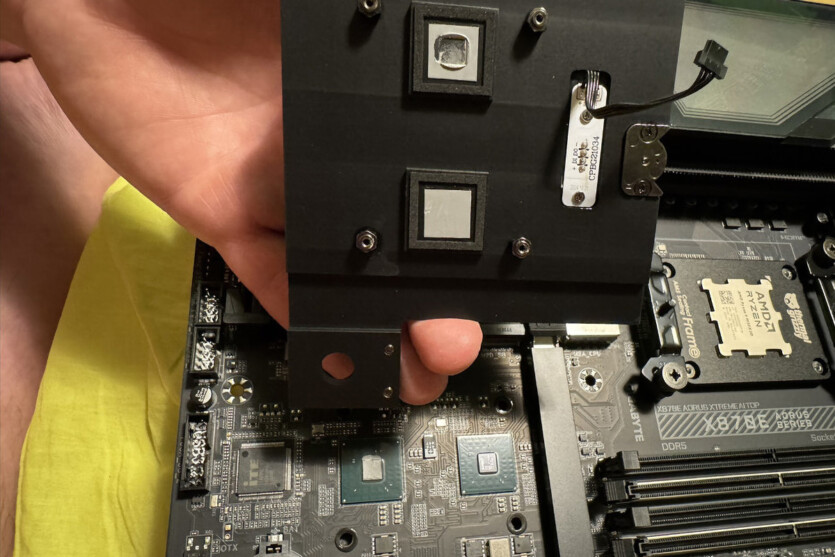The Gigabyte X870E Aorus Extreme AI TOP board is overheating due to a chipset cooling problem. Thanks to thermal paste and thermal pad, we managed to radically reduce the temperature.
The chipset temperature exceeding 100°C forced the user to disassemble the motherboard. He found a bad heat sink contact on one of the two Promontory 21 chips in series. Preliminarily, this could be a defect during assembly, which is likely to affect a small number of boards, or a design defect that could reproduce the problem on other boards.
AMD’s X870E chipset combines two sets of Promontory 21 chips in a sequential arrangement, just like the X670E. The flagship 800 and 600 series motherboards have two sets of Promontory 21 chipsets, which can be seen after removing the heatsink. Functionally, both of these chipsets are similar, although they have different locations. Hardware monitoring utilities display two different temperature readings in the chipset section.

Reddit user Xabiro shared a screenshot of the HWinFO screen, which shows the second Gigabyte X870E Aorus Xtreme chipset with a temperature of almost 110 °C. At the same time, the system with Ryzen 9 9950X3D did not have a heavy load. Another user confirmed the same problem on his PC. Xabiro removed the heatsink that covers both chips and found out what was wrong.

You can clearly see that one of the chipsets is not in contact with the heatsink. The factory-applied thermal paste on the corresponding contact surface shows no traces of contact at all, as if it had never been pressed against the chip, which is also completely dry Motherboard owner By adding more thermal paste to close the gap between the two surfaces, it reduced the temperature to a moderate 71 °C. Using a thermal pad in addition to the thermal paste lowered the temperature even further — to 64 °C.
Xabiro suggests that design of the release mechanism Gigabyte’s heatsink may be contributing to the problem. Located under the heatsink, it potentially causes a slight vertical rise that can disrupt the contact between the chipset and the heatsink. There are only two confirmed cases of this defect so far, so it’s too early to draw conclusions.
Source: Tom’s Hardware
